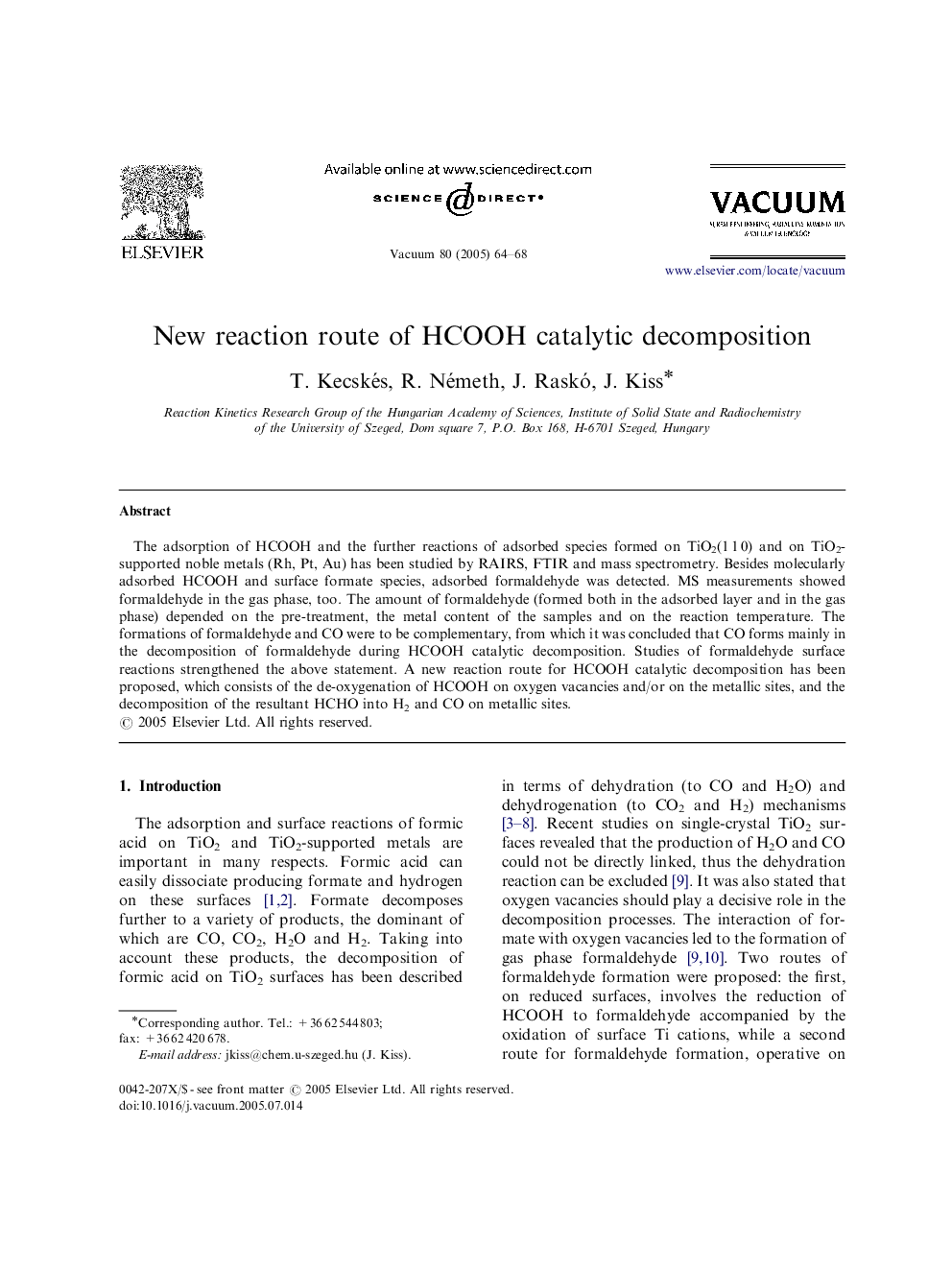| Article ID | Journal | Published Year | Pages | File Type |
|---|---|---|---|---|
| 9821479 | Vacuum | 2005 | 5 Pages |
Abstract
The adsorption of HCOOH and the further reactions of adsorbed species formed on TiO2(1Â 1Â 0) and on TiO2-supported noble metals (Rh, Pt, Au) has been studied by RAIRS, FTIR and mass spectrometry. Besides molecularly adsorbed HCOOH and surface formate species, adsorbed formaldehyde was detected. MS measurements showed formaldehyde in the gas phase, too. The amount of formaldehyde (formed both in the adsorbed layer and in the gas phase) depended on the pre-treatment, the metal content of the samples and on the reaction temperature. The formations of formaldehyde and CO were to be complementary, from which it was concluded that CO forms mainly in the decomposition of formaldehyde during HCOOH catalytic decomposition. Studies of formaldehyde surface reactions strengthened the above statement. A new reaction route for HCOOH catalytic decomposition has been proposed, which consists of the de-oxygenation of HCOOH on oxygen vacancies and/or on the metallic sites, and the decomposition of the resultant HCHO into H2 and CO on metallic sites.
Related Topics
Physical Sciences and Engineering
Materials Science
Surfaces, Coatings and Films
Authors
T. Kecskés, R. Németh, J. Raskó, J. Kiss,
